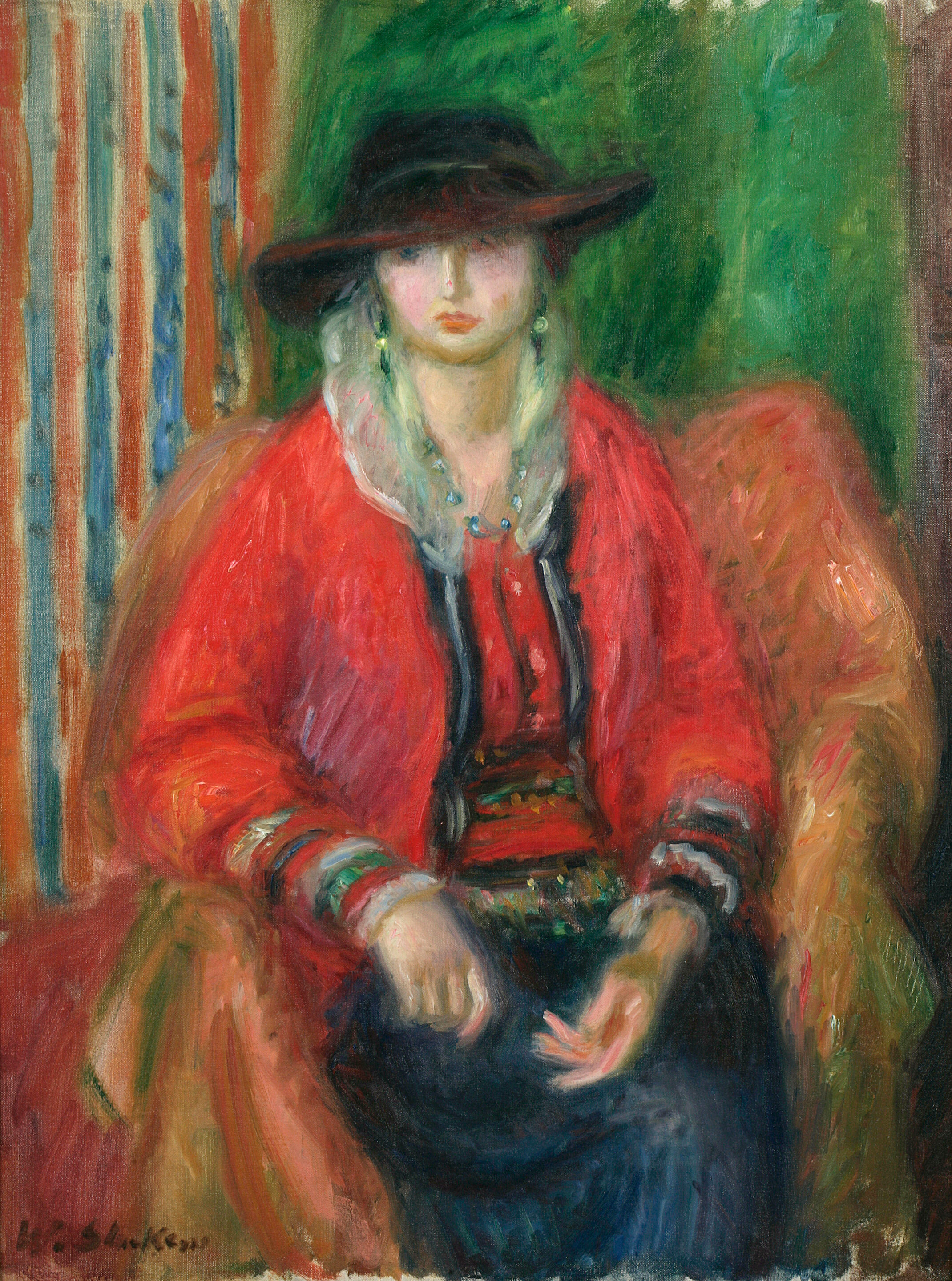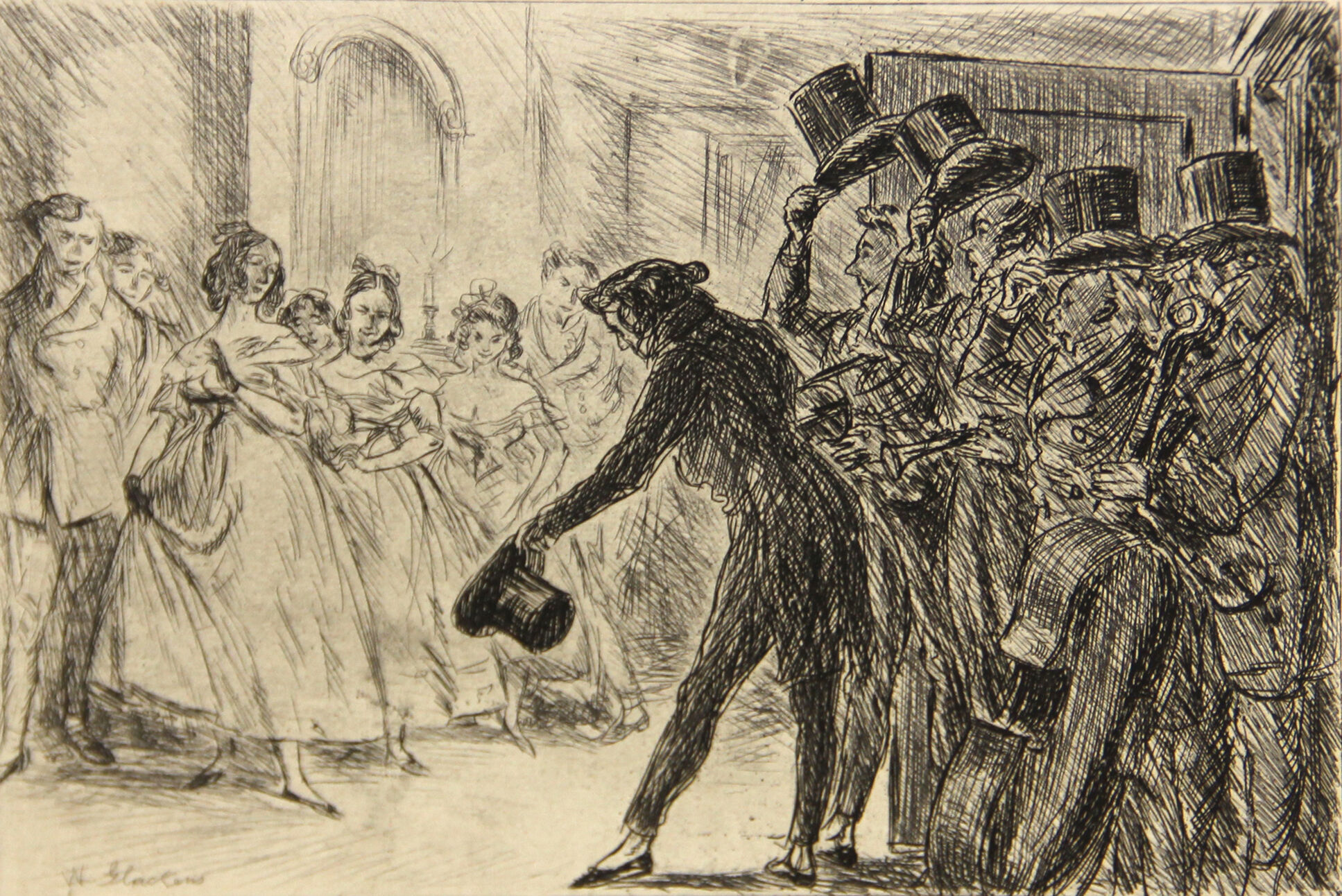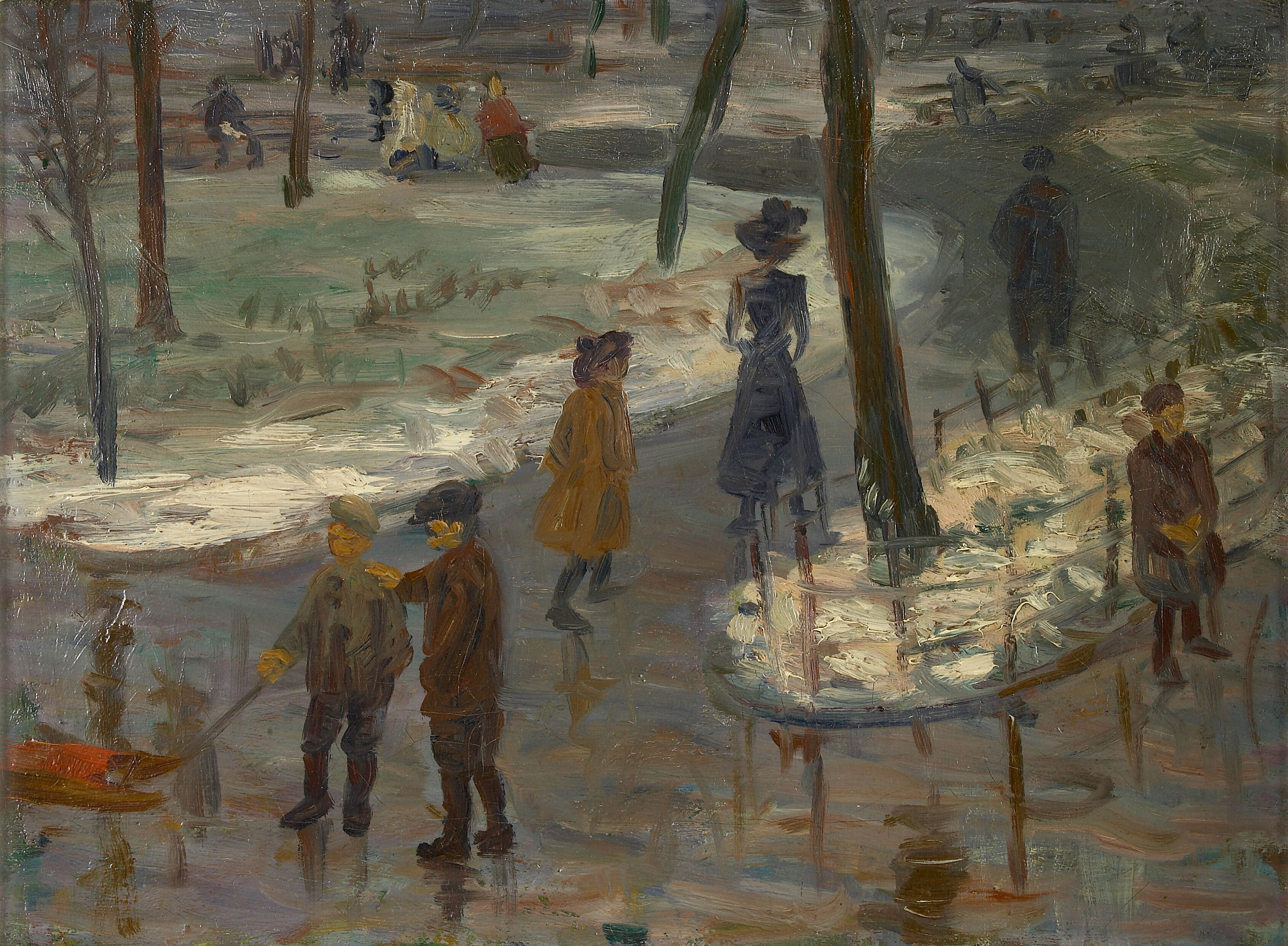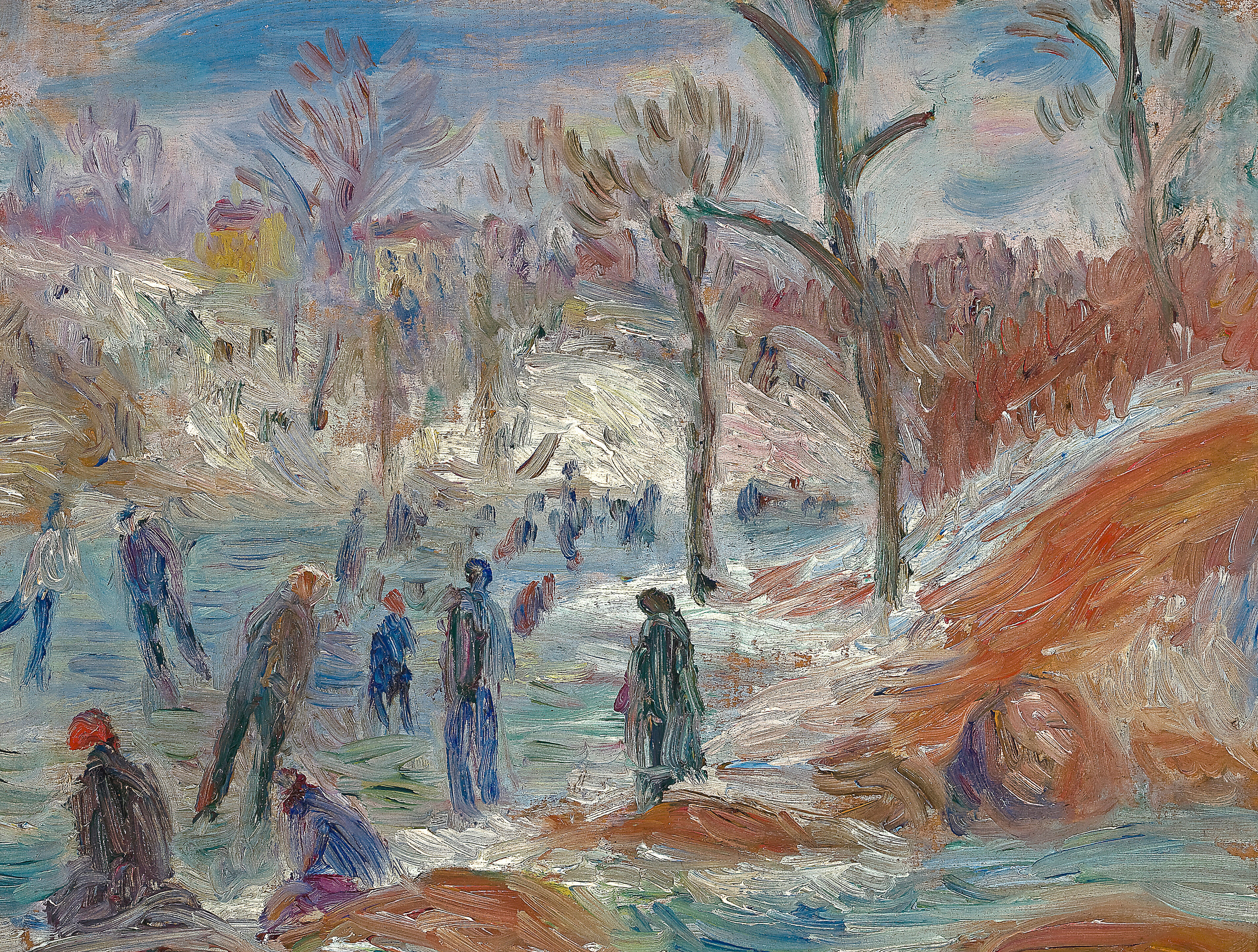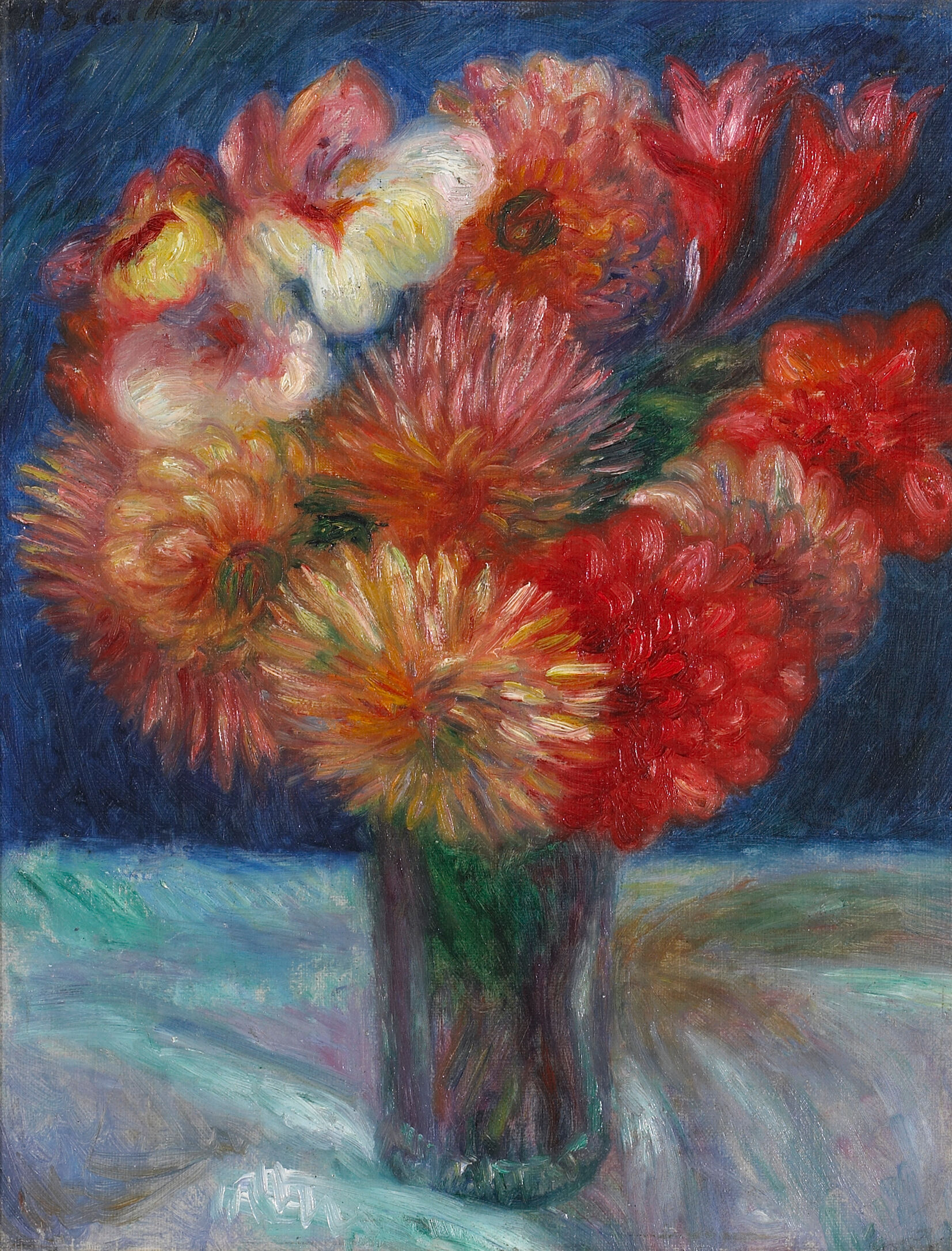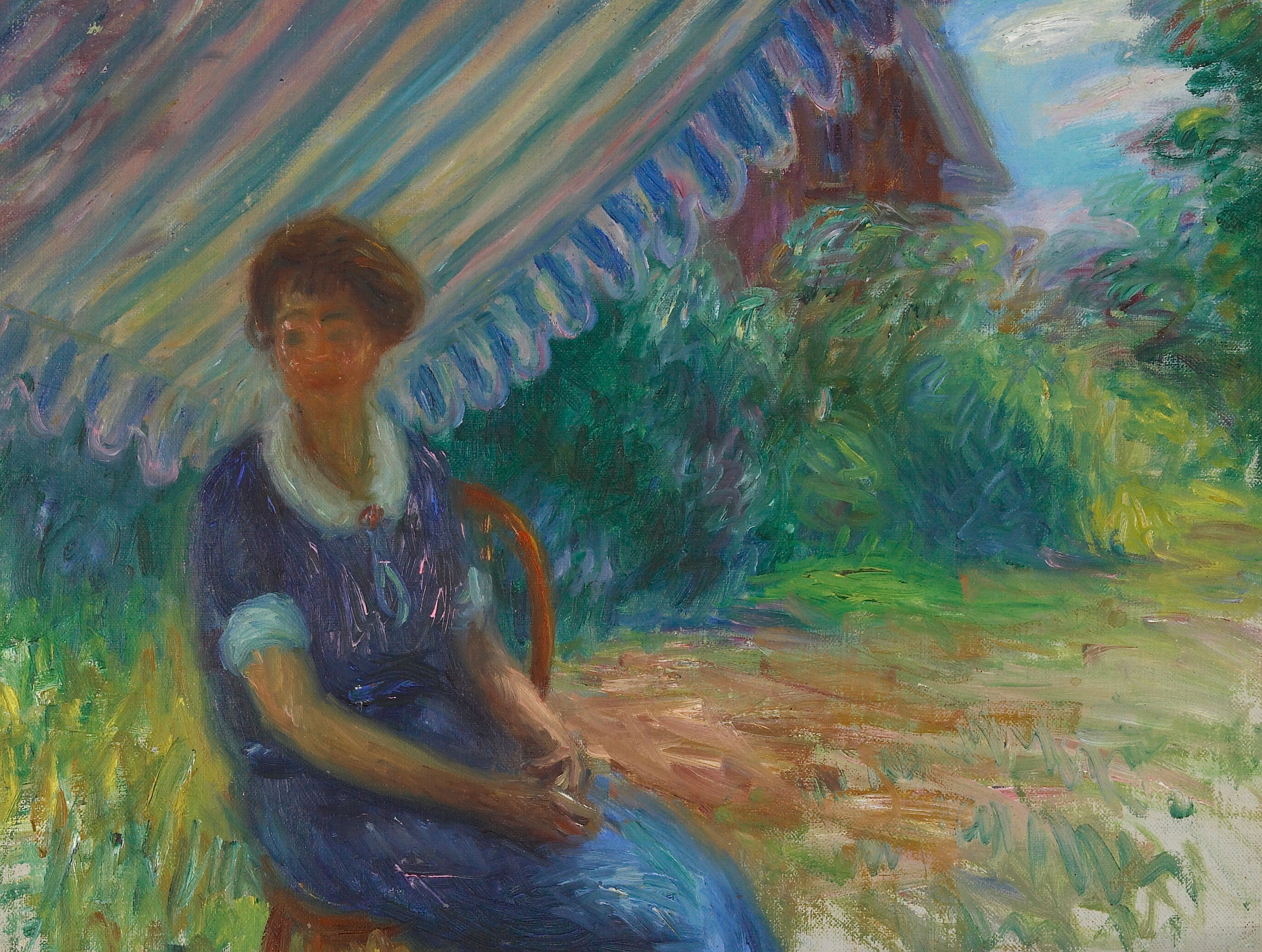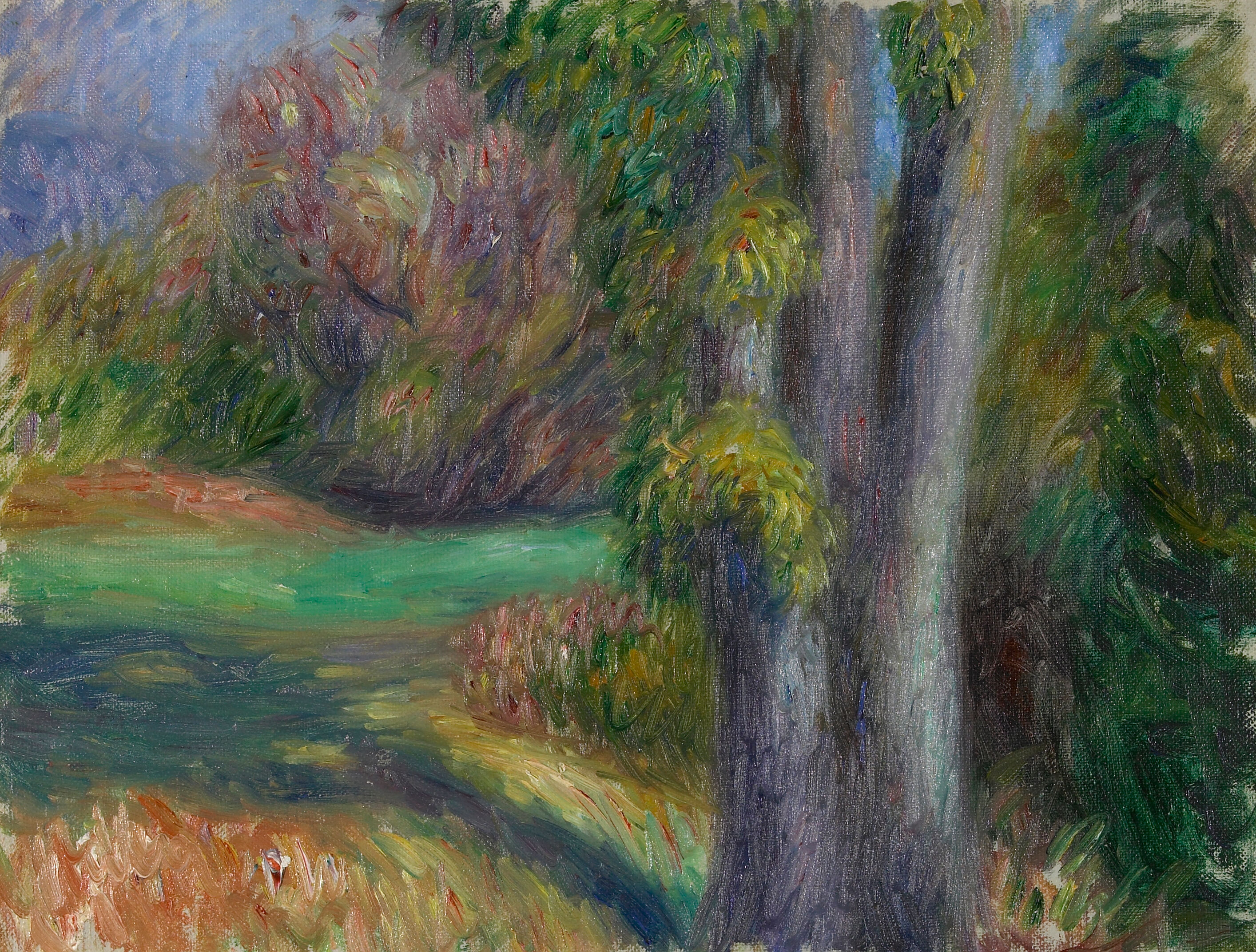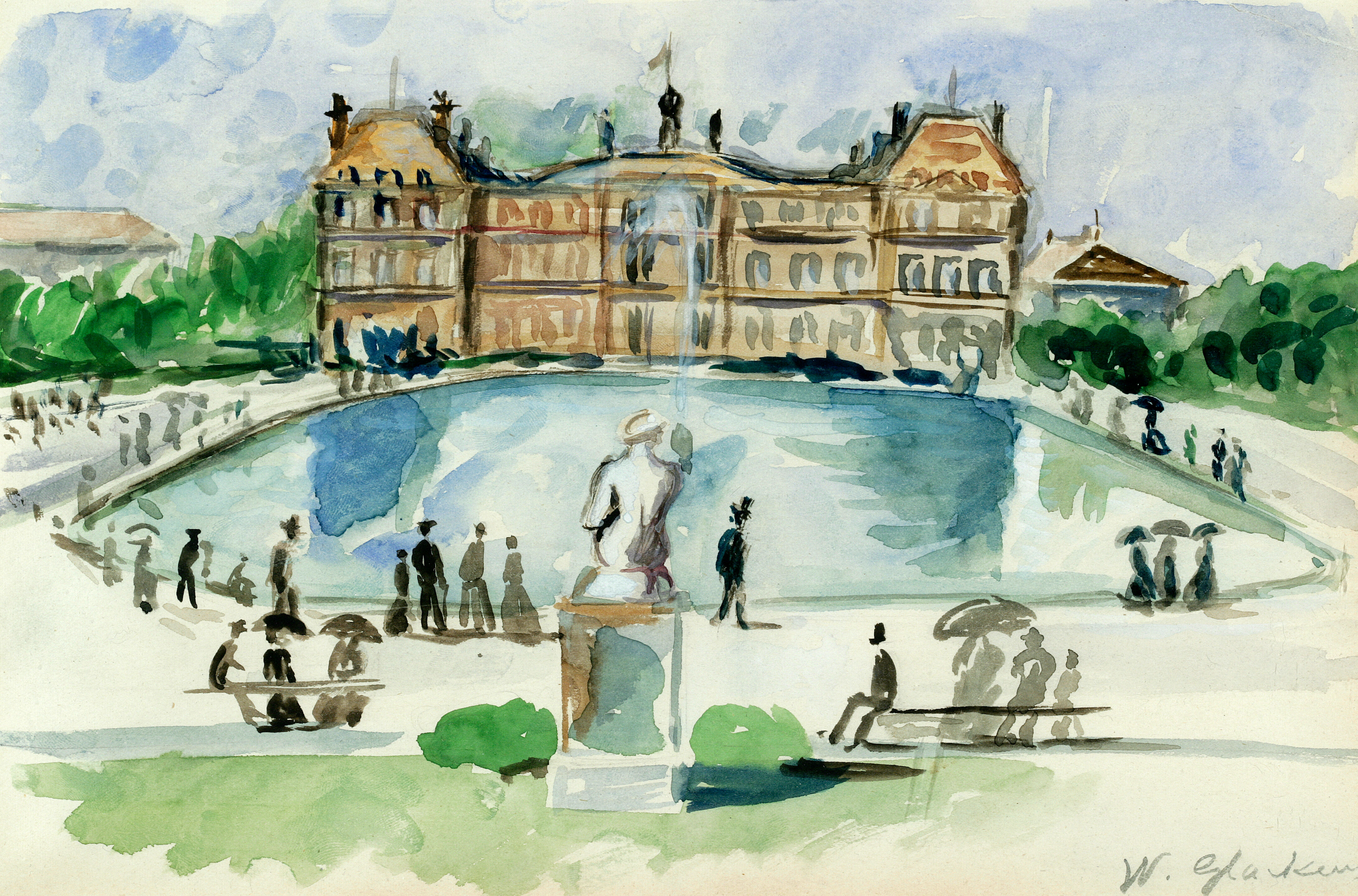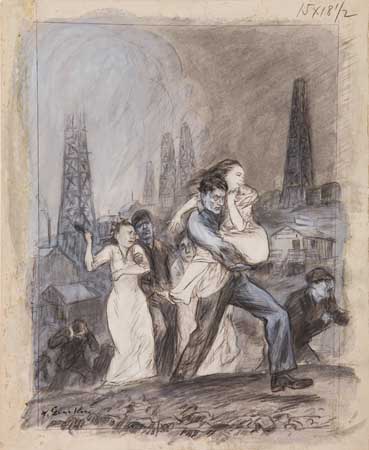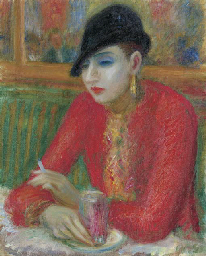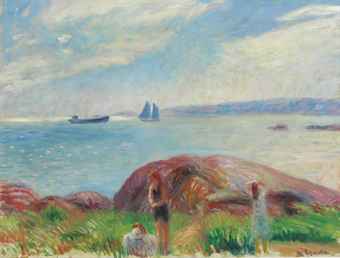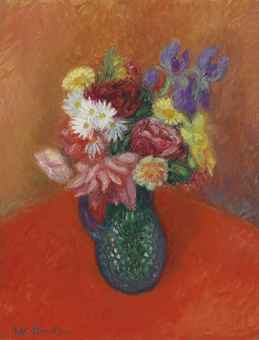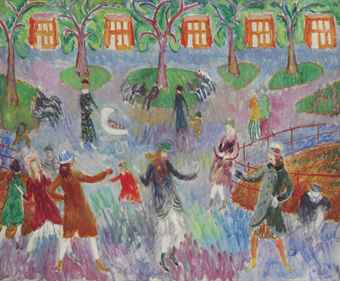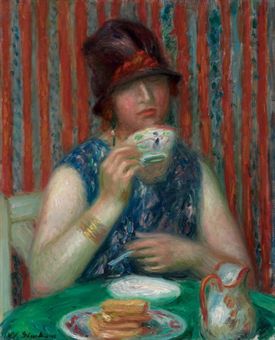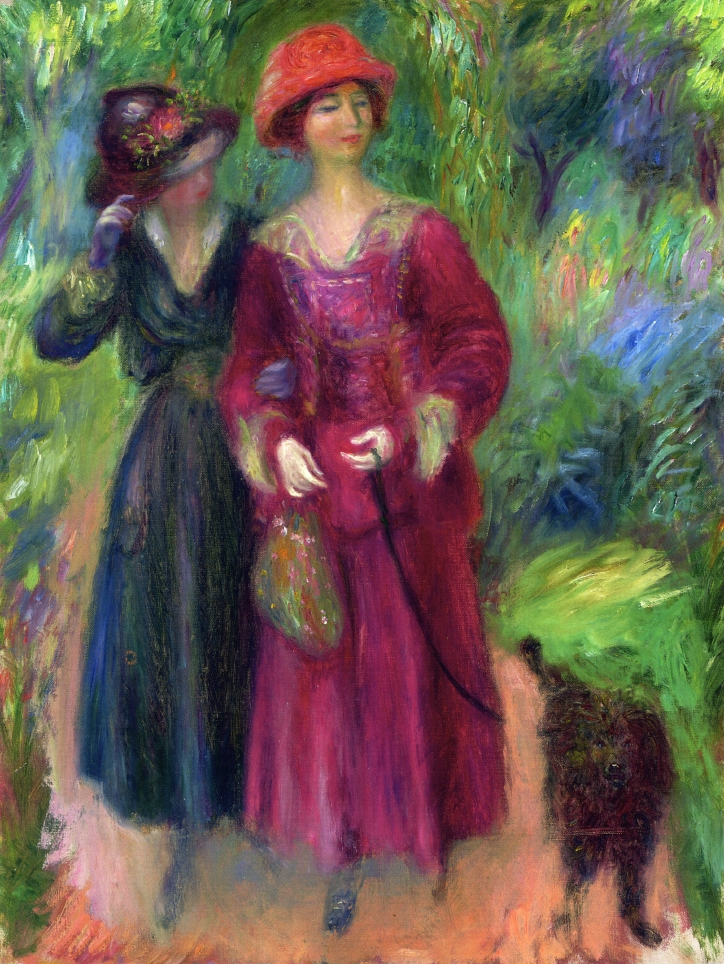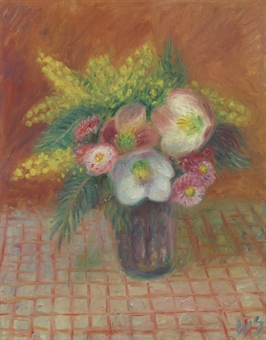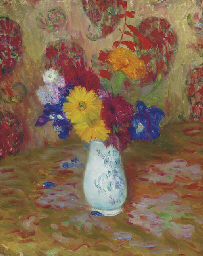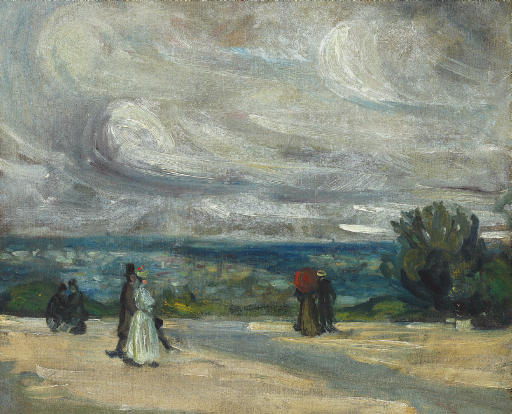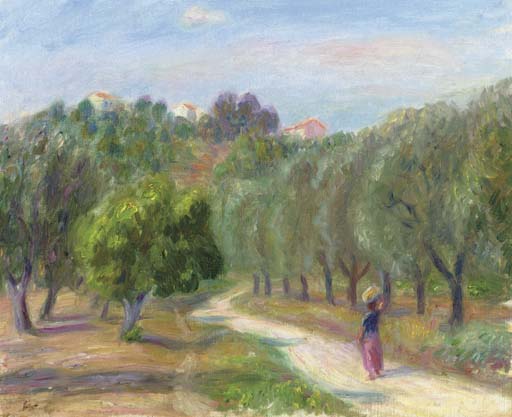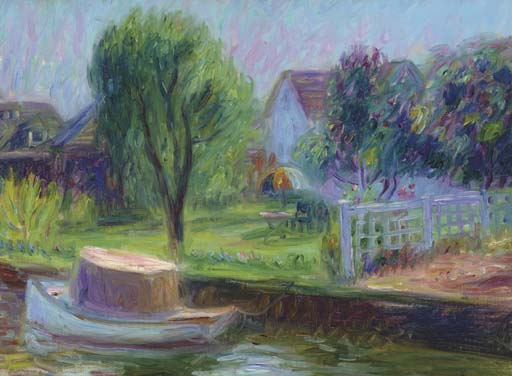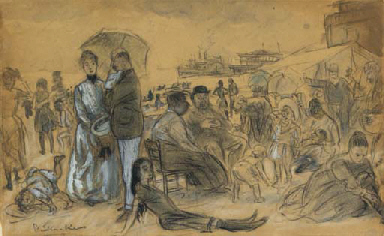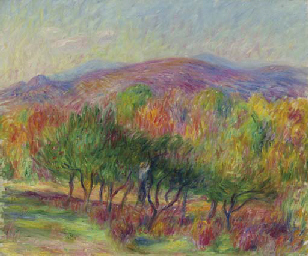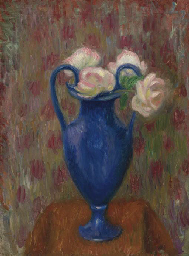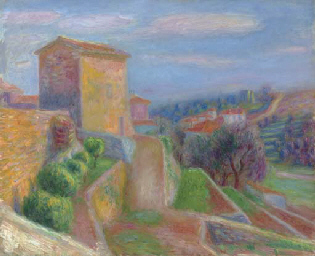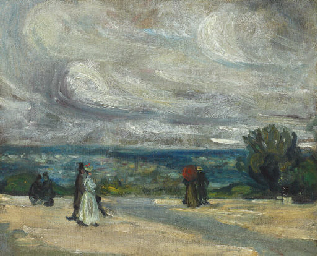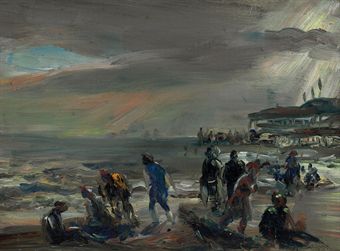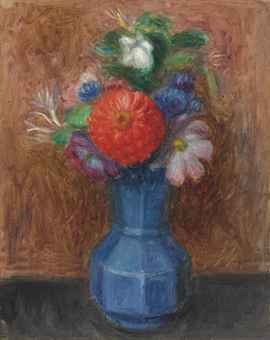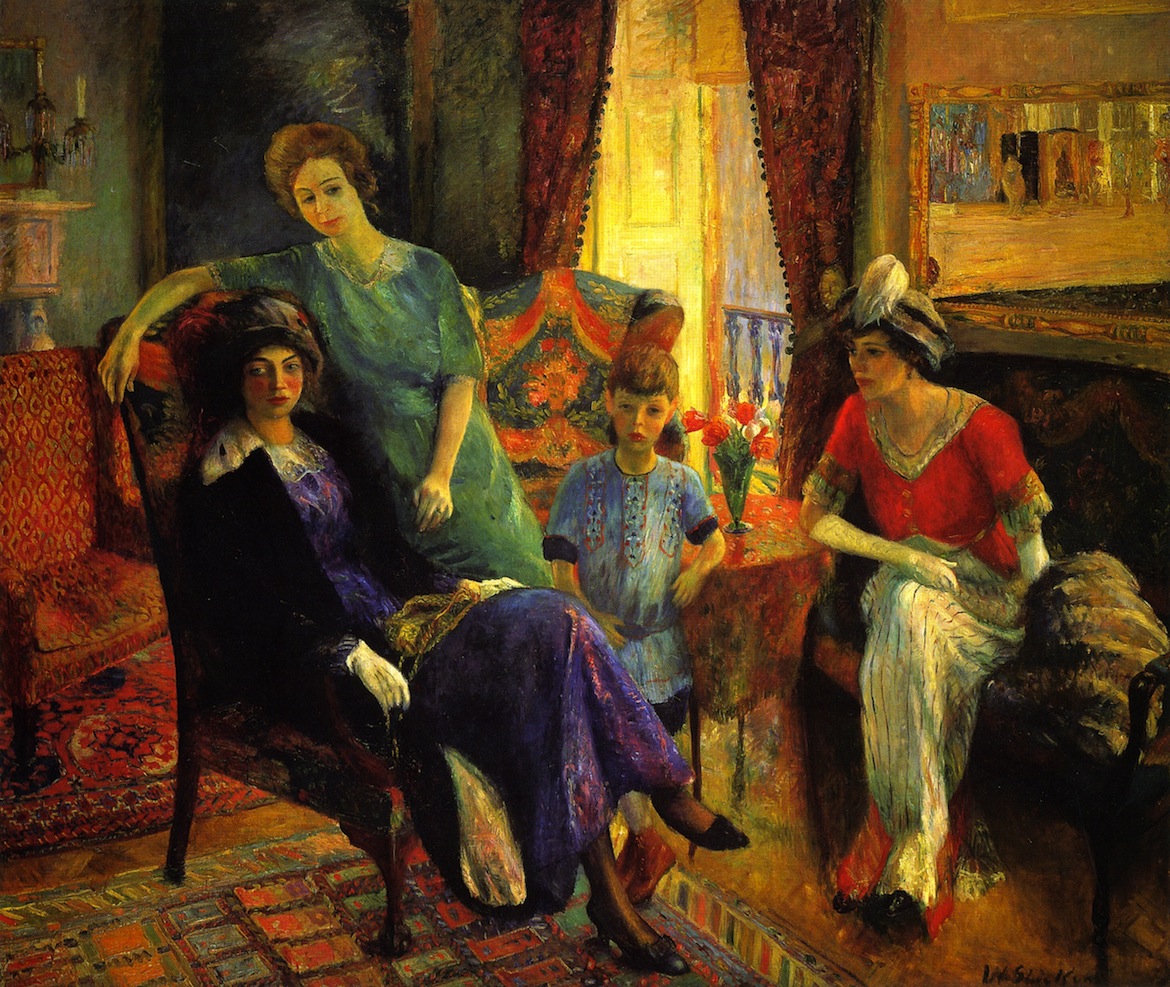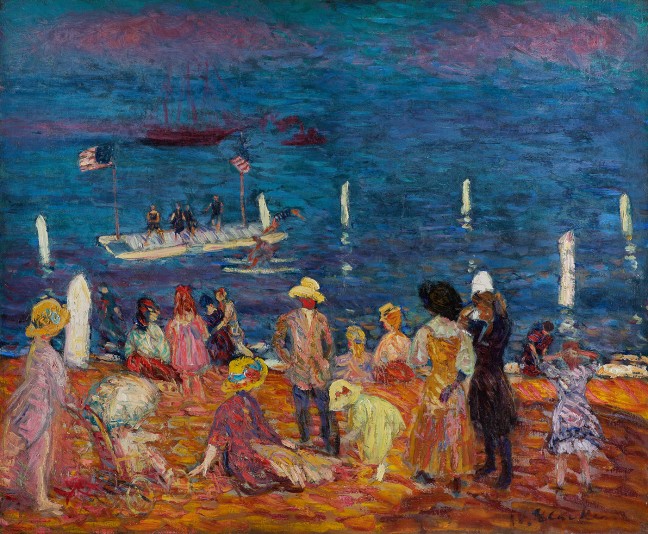Sotheby's 2013
WILLIAM JAMES GLACKENSTHREE TOMATOESLOT SOLD. 17,500
Sotheby's 2012WILLIAM JAMES GLACKENS
TERRACES, SOUTH OF FRANCE
Estimation 25,000 — 35,000
WILLIAM JAMES GLACKENS
STILL LIFE WITH JAPAN BOX
Estimation 30,000 — 50,000
Sotheby's 2007
WILLIAM GLACKENSSTUDY FOR NUDE WITH APPLEEstimate 30,000 — 50,000
WILLIAM GLACKENS
IRA ON THE BREAKFAST PORCH AT BELLPORT
Estimate 40,000 — 60,000
Christie's 2012Bonhams 2012
William Glackens (American, 1870-1938)
Woman in Red Jacket
24 1/4 x 18 1/4in
US$ 180,000 - 240,000Bonhams 2011William Glackens (American, 1870-1938);Here is our Music...;
US$ 300 - 500Bonhams 2009William Glackens (American, 1870-1938)Boys with sled, Washington Square12 x 16in
Sold for US$ 206,000William Glackens (American, 1870-1938)Skating Pond6 1/4 x 8 1/2in
Sold for US$ 51,850William Glackens (American, 1870-1938)Vase of flowers12 1/2 x 9 3/4in
Sold for US$ 46,360Bonhams 2008William Glackens (American, 1870-1938)The Tent, Conway (Girl Seated)12 x 16in
Sold for US$ 33,000William Glackens (American, 1870-1938)The Tree Trunk-
WILLIAM GLACKENS (1870-1938)
L'APERITIF
Estimate $200,000 - $300,000 Price Realized $755,200
PR.$192,000
Children - Washington Square ParkPRICE REALIZED $170,500
Christie’s 2010
Christie’s 2008A Stroll in the ParkPRICE REALIZEDChristie’s 2007-
WILLIAM GLACKENS (1870-1938)
FLOWERS AGAINST A PALM LEAF PATTERN
Estimate $80,000 - $120,000 Price Realized 85,000
Christie's 2006
Christie's 2004
WILLIAM GLACKENS (1870-1938)
THE SWING
Estimate $250,000 - $350,000 Price Realized $365,900
-
Christie’s 2001Christie's 2000
Wickford Harbor, Rhode Island
PRICE REALIZED
$458,500
Girl with Teacup
PRICE REALIZED
$242,500
The Terrace
PRICE REALIZED
$85,000
Storm Over the Beach
PRICE REALIZED
$62,500
New Hampshire Boarding House
PRICE REALIZED
$35,000
Flowers in Blue Octagonal Vase
PRICE REALIZED
$25,000
Still Life with Orange Lilies, c. 1930s
Sold for:
$23,700
\
At a Quick Run they Skidded Him on His Heels
Sold for: $711
National Galley of Art, Washington, DC
- Work of Art
- William James Glackens
- Glackens, William
- , American, 1870 - 1938
- Luxembourg Gardens
- 1906
- oil on canvas
- overall: 60.6 × 81.6 cm (23 7/8 × 32 1/8 in.)
- framed: 75.6 × 95.3 × 7 cm (29 3/4 × 37 1/2 × 2 3/4 in.)
- Corcoran Collection (Museum Purchase, William A. Clark Fund)
- 2014.79.47
-
Biography and Works - Questroyal Fine Arts- Glackens, William
- , American, 1870 - 1938
- Family Group
- 1910/1911
- oil on canvas
- overall: 182.8 x 213.3 cm (71 15/16 x 84 in.)
- framed: 200.7 x 231.1 x 7 cm (79 x 91 x 2 3/4 in.)
William Glackens (1870–1938)
The Sea Shore
Oil on canvas
25⅛ x 30⅛ inches
Signed lower right: W. Glackens
William Glackens (1870–1938)
American Impressionist and Member of the Ashcan School
By Amy Spencer
Best known for his colorful impressionistic scenes of urban life, William Glackens was at the forefront of the New York art scene; he was a member of the progressive Ashcan School and co-organizer of the first Armory Show.
I. Biography
II. Chronology
III. Collections
IV. Exhibitions
V. Memberships
VI. Notes
VII. Suggested Resources
I. Biography
William James Glackens was an American painter and illustrator who co-founded the Ashcan School art movement. At the beginning of the 20th Century, the Ashcan School group developed a new aesthetic – without preapproval or favor of the art establishment – that depicted realistic portraits of American urban life. Dubbed by the press as The Eight Independent Painters, or The Eight, the group exhibited their work in America’s first ‘no jury, no prizes’ exhibitions. Glackens became known for his dark paintings of street scenes and unsentimental portraits of entertainers.
As the most traveled and painterly of the group, Glackens was strongly influenced by the Impressionists. Over the course of his career, his paintings became less somber and increasingly brighter, as he expressed the joy of life through painting. Throughout most of his career, Glackens also worked as an illustrator of newspapers, magazines, and novels.
Glackens was born in Philadelphia on March 13, 1870. He attended the progressive Central High School as a teenager where his drawing skills were nurtured. After graduating in 1890, Glackens worked as an artist-reporter for the Philadelphia Record and the Philadelphia Press. At the Press he worked with George Luks, Everett Shinn, and John Sloan; all future members of The Eight. While working as an artist-reporter, Glackens attended evening classes at the Pennsylvania Academy of Fine Arts. It was during this time that Sloan introduced Glackens to Robert Henri. Henri was a socially-minded artist who, having studied European art abroad, was determined to rescue American art from what he viewed as a conservative aestheticism dictated by the art establishment.
In 1895, Glackens sailed to Europe with Henri where they rented a studio together in Paris. Glackens spent his time in Europe studying the French Impressionists, and also taking bicycle trips around Northern France, Belgium, and Holland to study Dutch masters. In Glackens’ paintings from this period he often adopts the color palette and technique of Franz Hals, and the subject matter of Édouard Manet. In 1896, Glackens exhibited a painting at the Salon of the Société Nationale des Beaux-Arts, before returning to America to settle in New York.
Glackens resumed his career as an artist-reporter working at the New York Sunday World then at the New York Herald. In 1898, he traveled to Cuba to report on the Spanish-American War. This was Glackens’ last job as an artist-reporter. After 1897, Glackens focused on illustration for fiction publications. His gouache and charcoal drawings demonstrated his mastery at creating frank images that looked as though they had been observed from life. Glackens found ample work freelancing for magazines such as Ainslie’s, Century, Collier’s Weekly, Harper’s Bazaar, McClure’s, the Saturday Evening Post, and Scribner’s. From 1899 to 1913 Glackens also illustrated thirteen books.
In 1904, Glackens married artist Edith Dimock. They travel to Spain, France, and London on their honeymoon. In 1907 their son Ira was born, and in 1913 they had a daughter, Lenna.
After 1900, Glackens focused his career towards painting, showing his work in several group exhibitions with his press associates. These early exhibitions were the genesis for the formation of The Eight, as Glackens, Sloan, Luks, Shinn, Arthur B. Davies, Ernest Lawson, and Maurice Prendergast shared a concern for painting images of everyday life and common people. The theater was one of Glackens’ favorite subjects and he painted many candid portraits of actors, dancers, and circus performers. In 1905, Glackens painted Chez Mouquin; an image of a man and glassy-eyed woman at bar, often compared with Edgar Degas’ The Absinthe Drinker (1875-76). This has become one of Glackens’ most celebrated paintings, and it now hangs at the Art Institute of Chicago.
In 1906 and 1907, Glackens submitted paintings to the National Academy. After having all but one of his paintings rejected, he met with Henri and Sloan to organize their own independent exhibition. The show was held at Macbeth Gallery in 1908, and consequently The Eight was born. The show’s reception was favorable and it toured to nine other cities, significantly raising the profile of the artist. Remarkably, Glackens was invited to be a member of the selecting committee for the National Academy in 1909.
Following the success of the Macbeth exhibition, Glackens participated the ‘Exhibition of Independent Artists’; the first ‘no jury, no prizes’ exhibition held in America, then at another Eight exhibition at the Union League Club. The works Glackens exhibited in these exhibitions revealed an increasingly colorful palette. He often worked with pastel at this time to give a sense of lively freshness to his works. Increasingly Glackens came to be compared with Pierre-Auguste Renoir, who Glackens greatly admired. Sometimes critics accused Glackens’ style of being too derivative, however Glackens also had many supporters and admirers who recognized that while his style was sympathetic towards French Impressionism, Glackens’ paintings were truly American in orientation.
Glackens had his first solo exhibition at the Madison Art Gallery, New York. The same year, Glackens was commissioned by his high school classmate, the wealthy inventor Albert C. Barnes, to travel to Paris and acquire some modern artworks for Barnes’ collection. On this trip, Glackens purchased significant paintings by Impressionists and Post-Impressionists, including several works by Renoir. Today, these works form the core of the Barnes Foundation’s collection in Merion, Pennsylvania.
As a founding member of the Association of American Painters and Sculptors, Glackens was centrally involved in organizing the ‘International Exhibition of Modern Art’, otherwise known as the Armory Show. The Armory Show was held at in New York’s 69th Regiment Armory, on Lexington Avenue from February 17, 1913 to March 15, 1913. It became a landmark event in introducing New Yorkers to Modern art from Europe. Glackens exhibited three paintings in the American section of the show.
After the mid-1910s, Glackens mostly abandoned painting urban scenes. While he remained close friends with Henri and his circle, Glackens began to define his art in a more individualized manner. Over the next two decades, Glackens’ subjects reflected his life, as he painted portraits of his friends and family, scenes of the beach and his summerhouse in New Hampshire, and landscapes from his numerous trips abroad. Between 1925 and 1936, Glackens took eight extensive trips to Europe, staying mostly in France. These later years were extremely productive for Glackens, and he frequently had solo exhibitions in New York.
As Glackens’ health began to deteriorate he began to paint more still lifes; simple arrangements of fruit and flowers that allowed him to experiment with formal concerns. While taking a trip to visit Prendergast in Westport, Connecticut, Glackens died suddenly in 1938.
Glackens’ paintings and illustrations are in the collections of the most important museums of American art, including the Whitney Museum of American Art, New York, the Museum of Fine Arts, Boston, and the National Gallery of Art, Washington, D.C. As a member of revolutionary Ashcan School, Glackens’ works perform solidly at auction. In May 2009, Glackens’ sunny Wickford Harbor, Rhode Island (1909) went for $458,500 at Christie’s in New York; a remarkable sale considering the economic recession and a pre-auction estimate that was only $200,000 to $300,000.1
II. Chronology
1870 Born in Philadelphia, Pennsylvania.
1890 Graduates from Central High School Philadelphia with a Bachelor of Arts
1891 Becomes an artist-reporter for the Philadelphia Record
1892 Joins the Philadelphia Press with John Sloan, George Luks, and Everett Shinn
Attends evening classes at the Pennsylvania Academy of Fine Arts
Sloan introduces Glackens to Robert Henri
1894 Shares a studio with Henri
1895 Has first major book illustration published (from 1899 to 1913 Glackens illustrates thirteen books)
Quits job and sails to Paris on a sketching trip with Henri
1895-6 Takes a bicycle trip around Northern France, Belgium, and Holland to study Dutch masters
1896 Has painting shown at the Salon of the Société Nationale des Beaux-Arts
Returns to America and settles in New York City where he works for the New York World as an artist-reporter
1897 Works at the New York Herald while painting in his spare time
1898 Travels to Cuba to report on the Spanish-American War for McClure’s Magazine (this is his last job as an artist-reporter)
Establishes himself as a magazine illustrator working over the next twenty-years for magazines such as Ainslie’s, Century, Collier’s Weekly, Harper’s Bazaar, McClure’s, the Saturday Evening Post, and Scribner’s
1901 With Henri, Ernest Fuhr, Alfred Maurer, Sloan, and others, exhibits paintings at the Allen Gallery
1903 Travels to Saint Pierre, off the coast of Newfoundland with Fuhr
1904 Marries the artist Edith Dimock
Participates in a group show at the National Arts Club with Arthur B. Davies, Henri, Luks, Maurice Prendergast, and Sloan
1906 Becomes an associate at the National Academy of Design
Travels to Spain, France, and London
1907 Son, Ira, is born
1908 With Davies, Henri, Ernest Lawson, Luks, Prendargast, Shinn, and Sloan hold The Eight exhibition at the Macbeth Gallery (the show tours to Philadelphia, Chicago, Toledo, Detroit, Indianopolis, Cincinnati, Pittsburgh, Bridgeport, and Newark)
1910 With Henri, Sloan, Davies, and others, organizes the ‘Exhibition of Independent Artists’, the first ‘no jury, no prizes’ exhibition held in America
Glackens’ palette is becoming increasingly colorful
1911 As a charter member of the Association of American Painters and Sculptors begins to organize the Armory Show
1912 Goes to Paris with Maurer on a buying trip for Albert C. Barnes, purchases works by Édouard Manet, Edgar Degas, Auguste Renoir, Paul Cézanne, Vincent van Gogh, Paul Gauguin, and Henri Matisse
First solo show opens at the Madison Art Gallery
1913 The Armory Show opens, Glackens exhibits three works
Daughter, Lenna, is born
1914 Begins to take on fewer illustration projects as he dedicates himself to painting
1917 Elected president of the Society of Independent Artists
1919 Illustrates his last story, ‘On the Beach’ for Collier’s Weekly
1925 The Art Institute of Chicago purchases Chez Mouquin
Travels abroad, spending most of his time in France painting (also takes trips overseas in 1926, 1928, 1929, 1930, 1931, 1932, 1936)
1926 Health begins to deteriorate
1937 Receives the Grand Prix at the Paris Exposition
1938 Dies of a cerebral hemorrhage when visiting Prendergast in Westport, Connecticut
Memorial exhibition opens at the Whitney Museum of American Art (tours to Pittsburgh, Chicago, Los Angeles, San Francisco, Saint Louis, Louisville, Cleveland, Washington D.C., and Norfolk)
III. Collections
Albright-Knox Gallery, NY
Art Institute of Chicago, IL
Barnes Foundation, PA
Boca Raton Museum of Art, FL
Brooklyn Museum of Art, NY
Carnegie Museum of Art, PA
Corcoran Gallery of Art, DC
Currier Museum of Art, NH
Cleveland Museum of Art, OH
Everson Museum of Art, NY
Delaware Art Museum, DA
Fine Arts Museum of San Francisco, CA
Library of Congress, DC
Metropolitan Museum of Art, NY
Munson-Williams-Proctor Institute, NY
Museum of Art, Fort Lauderdale, FL
Museum of Fine Arts, MA
National Gallery of Art, DC
New Britain Museum of American Art, CT
Pennsylvania Academy of Fine Arts, PA
Santa Barbara Art Museum, CA
Sheldon Museum of Art, NE
Wadsworth Athenaeum Museum of Art, CT
Walker Art Center, MN
Whitney Museum of American Art, NY
IV. Exhibitions
1894 The 64th Annual Exhibition of the Pennsylvania Academy of the Arts, Philadelphia, PA
1896 Société Nationale des Beaux-Arts, Paris, France
1901 Allen Gallery, New York, NY
1908 Macbeth Gallery, New York, NY
1910 Exhibition of Independent Artists, New York, NY
1911 Union League Club, New York, NY
1912 First solo exhibition, Madison Art Gallery, New York, NY
1913 Folsom Gallery, New York, NY
1917 Daniel Gallery, New York, NY
Bourgeois Galleries, New York, NY
1922 The Whitney Club, New York, NY
1925 C.W. Kraushaar Art Galleries
1928 C.W. Kraushaar Galleries, New York, NY
1931 C.W. Kraushaar Galleries, New York, NY
1935 C.W. Kraushaar Galleries, New York, NY
1938 Whitney Museum of American Art, New York, NY (tours to Pittsburgh, PA; Chicago, IL; Los Angeles, CA; San Francisco, CA; Saint Louis, MO; Louisville, KY; Cleveland, OH; Washington, DC, and Norfolk, VA)
1966 William Glackens in Retrospect, City Art Museum, Saint Louis, MO (tours to the National Collection of Fine Arts, D.C., and Whitney Museum of American Art)
1984 Shock of Modernism, Nassau County Museum of Fine Art Long Island, NY
1991-2 Selections from the Glackens Collection, Museum of Art, Fort Lauderdale, FL
1992-3 Touch of Glackens, Museum of Art, Fort Lauderdale
1993 The Magic of Line: Graphics from the Glackens Collection, Museum of Art, Fort Lauderdale
1994 William Glackens: Portrait and Figure Painter, Museum of Art, Fort Lauderdale
2007 Landscapes from the Age of Impressionism, Brooklyn Museum of Art, NY (tours to Portland Museum of Art, OR)
The Spectacle of Life: The Art of William Glackens, Museum of Art, Fort Lauderdale
Life’s Pleasures: The Ashcan Artists’ Brush with Leisure, 1895-1925, New York Historical Society, New York, NY
2009 The Eight and American Modernisms, Milwaukee Art Museum, WI
V. Memberships
Associate, National Academy of Design, NY
Charter member, Association of American Painters and Sculptors
President, Society of Independent Artists
VI. Notes
Christie’s, Important American Paintings, Drawings, and Sculpture, New York, May 20, 2009, Sale 2171, Lot 57, http://www.christies.com/LotFinder/lot_details.aspx?from=salesummary&intObjectID=5199676&sid=5cb9fca3-6562-4816-b164-6d34c2c17050
VII. Suggested Resources
Gerdts, William, The Golden Age of American Impressionism, New York: Watson-Guptill Publications, 2003.
Gerdts, William, William Glackens, New York: Abbeville Press, 1996.
Leeds, Valerie Ann, William Glackens: American Impressionist, New York: Gerald Peters Gallery, 2003.
Perlman, Bernard B., Painters of the Ashcan School: the Immortal Eight, New York: Dover Publications, 1988.
Totti, James, Life's pleasures: the Ashcan artists' brush with leisure, 1895-1925, London, New York: Merrell, 2007..Paintings by
William Glackens (1870–1938)
Vase of Flowers (Amaryllis)
Oil on canvas
20 x 15 inches
Signed lower left: W Glackens





